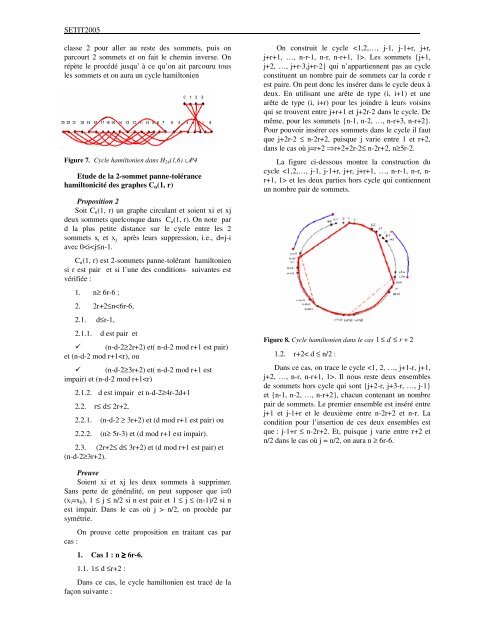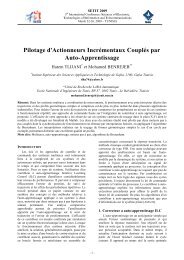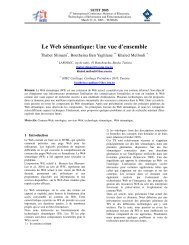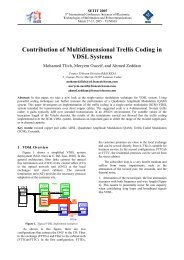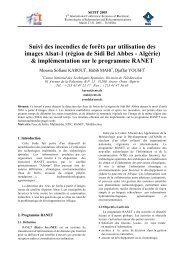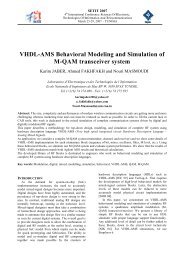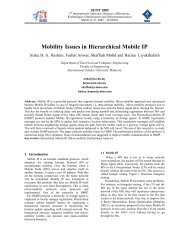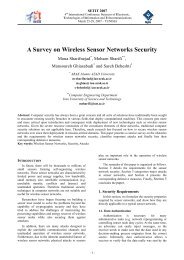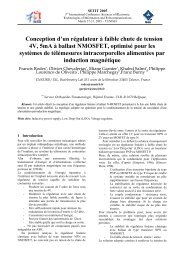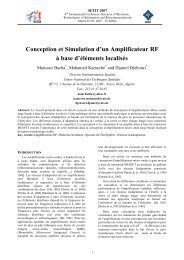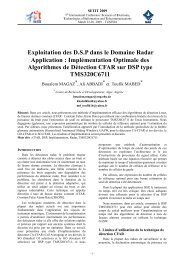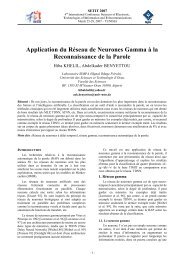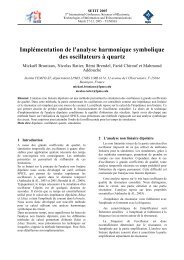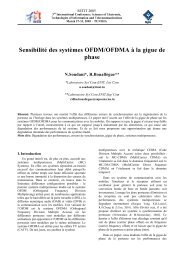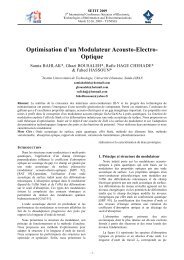Tolérance aux pannes dans les graphes distants et circulants
Tolérance aux pannes dans les graphes distants et circulants
Tolérance aux pannes dans les graphes distants et circulants
Create successful ePaper yourself
Turn your PDF publications into a flip-book with our unique Google optimized e-Paper software.
SETIT2005<br />
classe 2 pour aller au reste des somm<strong>et</strong>s, puis on<br />
parcourt 2 somm<strong>et</strong>s <strong>et</strong> on fait le chemin inverse. On<br />
répète le procédé jusqu’ à ce qu’on ait parcouru tous<br />
<strong>les</strong> somm<strong>et</strong>s <strong>et</strong> on aura un cycle hamiltonien<br />
Figure 7. Cycle hamiltonien <strong>dans</strong> H 24 (1,6) ∪P4<br />
Etude de la 2-somm<strong>et</strong> panne-tolérance<br />
hamiltonicité des <strong>graphes</strong> C n (1, r)<br />
Proposition 2<br />
Soit C n (1, r) un graphe circulant <strong>et</strong> soient xi <strong>et</strong> xj<br />
deux somm<strong>et</strong>s quelconque <strong>dans</strong> C n (1, r). On note par<br />
d la plus p<strong>et</strong>ite distance sur le cycle entre <strong>les</strong> 2<br />
somm<strong>et</strong>s x i <strong>et</strong> x j après leurs suppression, i.e., d=j-i<br />
avec 0


